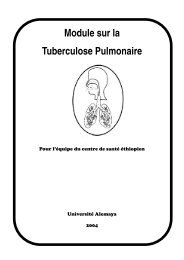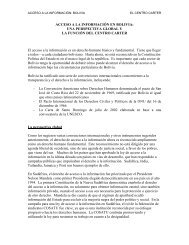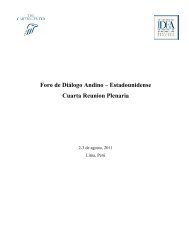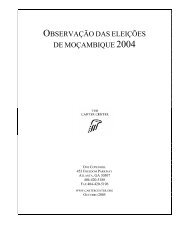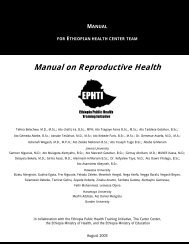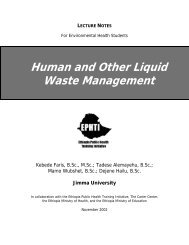Urinalysis - The Carter Center
Urinalysis - The Carter Center
Urinalysis - The Carter Center
Create successful ePaper yourself
Turn your PDF publications into a flip-book with our unique Google optimized e-Paper software.
yellow - green, or blue in its presence. <strong>The</strong> shade of the color is<br />
dependent on the amount of protein present. Falsely positive reactions<br />
may occur when protein is absent, if the urine is exceptionally alkaline or<br />
highly buffered.<br />
Procedure<br />
Observe the precautions and follow the instructions supplied by the<br />
manufacturer.<br />
1. Dip the reagent area of the strip briefly into the specimen.<br />
2. Remove excess urine by tapping or drawing the edge of the strip<br />
along the rim of the urine container.<br />
3. Compare the color that develops with the color chart supplied by the<br />
manufacturer and report as indicated on the chart.<br />
Quantitative 24 hour Protein Determinations<br />
Simple estimates of the protein content of urine are performed by<br />
quantitating the amount of precipitation formed following the addition of a<br />
specific chemical to the urine. <strong>The</strong> precipitate is measured either by<br />
comparison with known standards (sulphosalicylic acid turbidity test) or<br />
by recording the height of the column of precipitate in a speciallydesigned<br />
tube (Esbach's test).<br />
A. Sulphosalicylic Acid Turbidity Test<br />
Procedure<br />
1. Pipette 2.5 ml of centrifuged urine into a test tube.<br />
2. Add 7.5 ml of 3% sulphosalicylic acid.<br />
3. Invert to mix<br />
4. Let stand 30 minutes.<br />
Compare the turbidity with known standards prepared from<br />
solutions containing 10, 20, 30, 40, 75 and 100mg albumin/dl,<br />
and estimate the concentration of the unknown. If the unknown<br />
63







